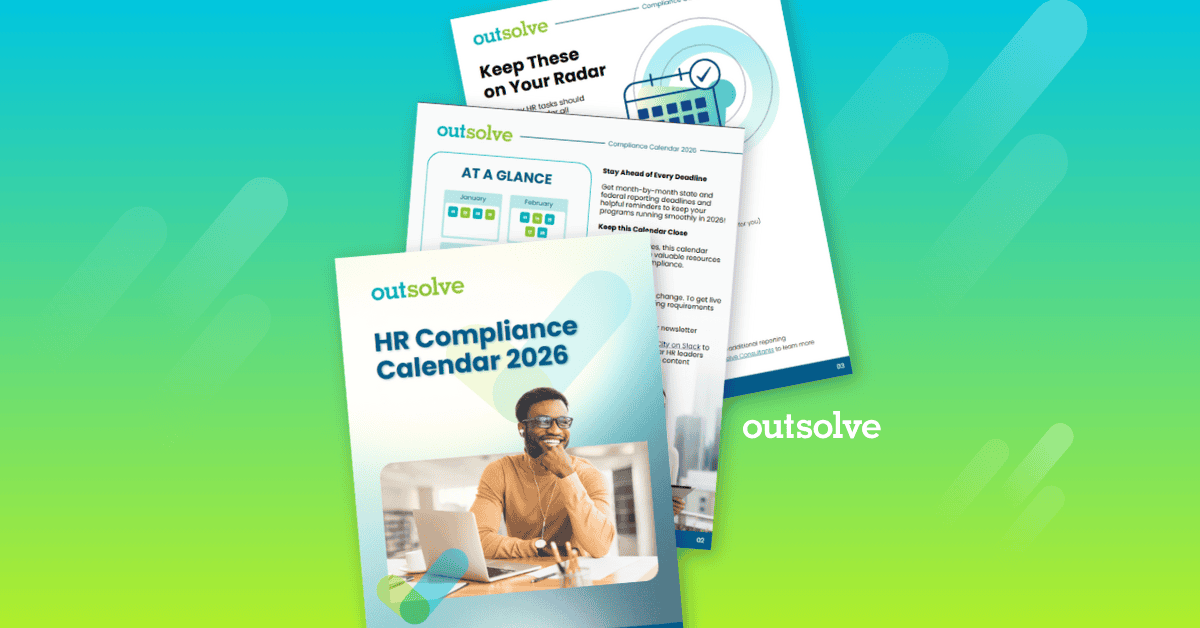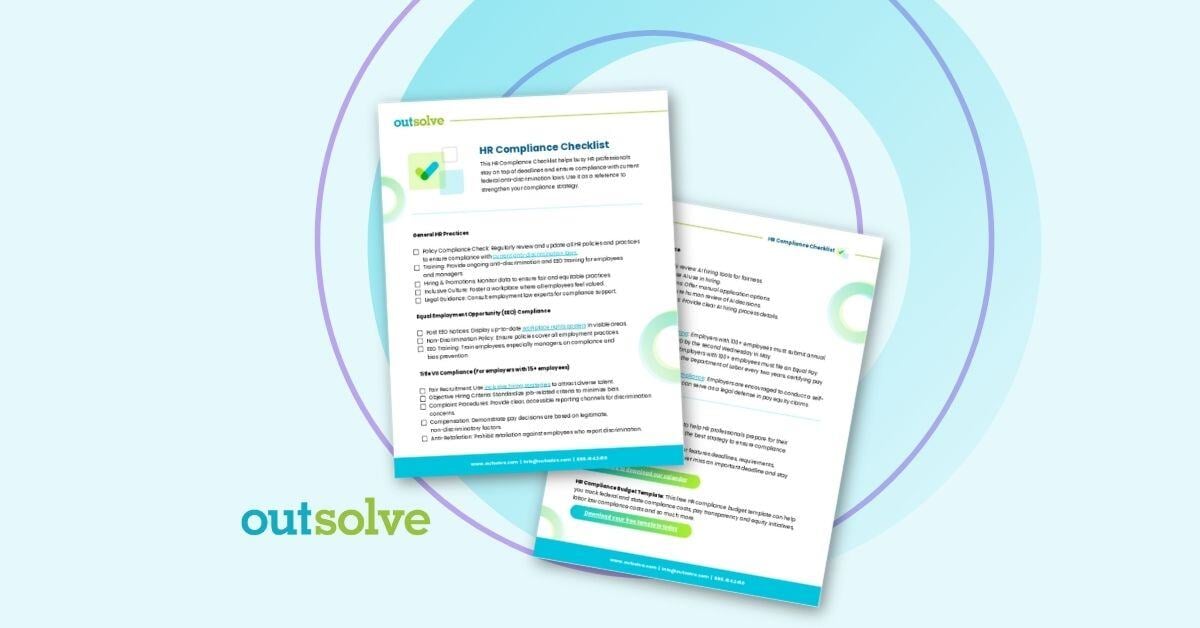4 min read
Internal Equity vs. External Equity: What’s the Difference
 Nick Jones
:
Sep 30, 2025 1:01:31 PM
Nick Jones
:
Sep 30, 2025 1:01:31 PM

When it comes to employment practices and conditions, fairness truly is a business imperative. As HR professionals, we know that compensation can make or break employee engagement, retention, and even your employer brand.
But getting pay "right" isn't always as easy as it sounds, especially when trying to balance internal equity and external equity. These two elements are the foundation of a sound compensation strategy, and if they’re out of sync, it can have a domino effect across the organization.
Here are three key takeaways you’ll learn in this article:
- What do internal and external equity mean?
- Why are they important?
- How can you strike the right balance, so your compensation practices are fair, competitive, and aligned with your business goals?
What is Pay Equity?
Before we zoom in on internal and external equity, let’s take a step back and look at the big picture.
Pay equity refers to the principle that employees should be paid fairly and consistently for the work they do, regardless of gender, race, age, or other personal characteristics. It’s about fairness, but also about transparency, consistency, and competitiveness.
From a legal standpoint, pay equity can help prevent companies avoid costly discrimination claims. From an organizational culture perspective, it cultivates trust and engagement. For business performance, it’s directly tied to attracting and retaining top talent.
Now, let’s break down the two key components of pay equity: internal equity and external equity.
What Is Internal Pay Equity?
Internal equity means ensuring that employees who perform similar work within your company are paid fairly compared to one another.
This fairness is assessed by looking at a variety of factors, including:
- Job responsibilities
- Experience and skills
- Performance and contributions
- Tenure with the company
In short, internal pay equity is about consistency across your internal teams. You want to make sure that two employees doing the same job in different departments, or with similar years of experience, aren’t being paid drastically different salaries without a legitimate reason.
As an example, imagine you have two marketing managers, one in your product marketing team and one in corporate communications. They have similar responsibilities, similar experience, and have been with the company about the same length of time. One is making $15,000 more than the other. Unless there’s a clear and documented reason for this gap, it creates internal tension.
People talk, and word spreads fast. And with the rise in pay transparency laws, employees can now see salary ranges for open positions. If a current employee is making less than the range, it could raise questions. That’s when trust erodes and retention issues rise.
What Is External Pay Equity?
External equity, on the other hand, is how your compensation stacks up against the market.
This means benchmarking salaries for each role against what similar companies are paying in your industry, region, and job market. It’s all about staying competitive so you can attract new talent and keep the talent you already have.
External pay equity becomes particularly important in fast-moving industries, like tech or biotech, where the demand for specific skills can quickly outpace what companies are paying internally.
Here’s another example: Let’s say you're hiring a software developer. According to market data, the going rate in your city is $120,000, but your internal salary range tops out at $100,000. If you want to hire the best candidate, then you’ll probably need to offer closer to the market rate. But doing so without adjusting internal salaries could create the problem of pay compression, which brings us to our next section.
Why Both Internal and External Pay Equity Matter
If you focus only on internal equity, then your compensation structure might be consistent, but it could be way out of touch with the market. That’s how you lose great candidates and watch your top performers get lured away by competitors.
If you focus only on external equity, then you may keep hiring great talent, but at the cost of alienating your current workforce. Nothing kills morale like realizing the new hire sitting next to you is making more for the same job you’ve been doing for years.
Here’s what happens when you don’t strike the right balance:
- Increased turnover
- Pay dissatisfaction
- Legal risks, especially if anyone is disproportionately underpaid
- A weakened employer brand
Finding the “sweet spot” between internal and external pay equity isn’t just a best practice. It’s critical for a sustainable and fair compensation strategy.
Common Challenges in Balancing Internal and External Equity
Of course, it goes without saying that all of this is easier said than done. HR faces some real challenges when trying to maintain internal and external pay equity. These include:
- Pay Compression: When you offer new hire salaries based on current market rates, but haven’t adjusted internal employees’ pay accordingly, you can end up with newer employees earning more than their experienced peers.
- Market Shifts: In some industries, salaries can increase rapidly. If your internal salary structures don’t keep up, then they can quickly become outdated, even if they were competitive just a year ago.
- Legacy Pay Gaps: Sometimes, longstanding disparities exist because of how salaries were set years ago. These legacy issues can create systemic inequities that are hard to fix overnight but ignoring them isn’t an option either.
- Remote Work Complications: With the rise of remote work, determining external equity is trickier. Do you pay based on an employee’s location, the company’s HQ, or the national average? There’s no one-size-fits-all answer.
How to Achieve Internal and External Pay Equity
So, what can you do to make sure your compensation is both fair and competitive? Here are some practical steps you can take:
- Conduct Regular Pay Equity Audits: Use data to identify disparities and flag inconsistencies across departments, demographics, or job roles. Look at base pay, bonuses, and equity if applicable.
- Use Reliable Benchmarking Data: Leverage external compensation surveys and tools to make sure that you’re offering pay that’s aligned with the market. Be sure to consider industry, company size, geography, and role.
- Define a Clear Compensation Philosophy: This plan should outline how your company approaches pay, such as which factors matter, how decisions are made, and how you balance internal and external equity. Share it with managers. Talk about it openly.
- Align Pay with Performance and Skills: Rewarding strong performance or in-demand skills can help justify differences in compensation, if those differences are clearly documented and transparently communicated.
- Be Transparent and Consistent: Employees are more likely to trust your compensation decisions when they understand the “why” behind them. This doesn’t mean you need to publish everyone's salary but having clear salary bands or ranges and decision parameters goes a long way.
For more tips on achieving pay equity, download our Pay Equity Audit checklist below.
What Pay Equity Means for Your Organization
Balancing internal equity and external equity is one of the most essential tasks in HR. It’s about more than just the numbers. It’s about building a workplace where people feel valued, fairly treated, and motivated to do their best work.
When you get it right, you boost trust, improve retention, and strengthen your employer brand. When you get it wrong, the costs are high—disengaged employees, reputational damage, and potentially even legal action.
That’s where OutSolve comes in. We partner with companies to develop smart, scalable compensation strategies based on both internal and external pay equity. From salary benchmarking and market analysis to pay transparency consulting and compensation framework design, we’re here to make sure your approach to pay is not just compliant, but compelling.
Ready to level up your compensation strategy?
Contact us today and let’s talk.
Nick Jones is a member of OutSolve’s compensation team as an analyst specializing in pay equity and market pay analyses. Nick also supports federal contractors with pay data analytics and state pay reporting. Experienced in interpreting big data, he provides companies with the vital information needed to ensure equity, efficiency, and competitiveness in their compensation. Nick graduated from Tulane University and earned his master’s degree in Data Analytics from the University of New Orleans in 2022.
Weekly OutLook
Featured Posts

New Year, New Deadlines: 2026 HR Compliance Calendar

outRageous HR: Plan Now or Pay Later
Related Posts

What Employers Need to Know About the Delaware Pay Transparency Law
Here's What You'll Learn

What is an Immigration Enforcement Raid?
Here's What You'll Learn

Refreshing Your I-9 Tools and Process to Stay Compliant
Form I-9 is a federal requirement that carries real consequences if handled improperly. With increased scrutiny on immigration by the current...


